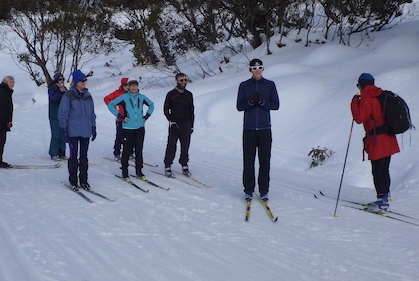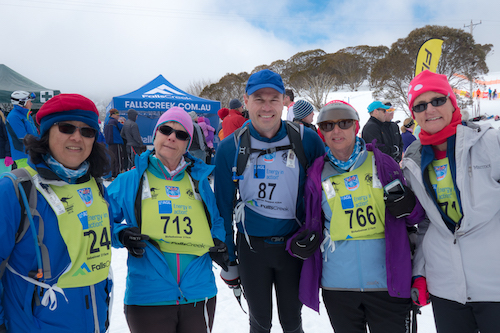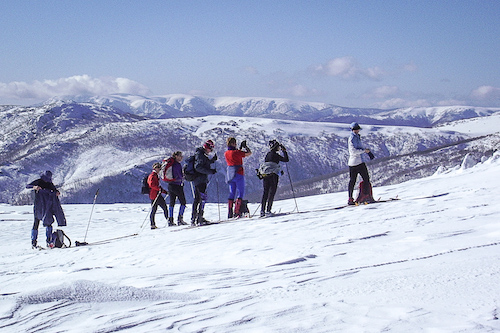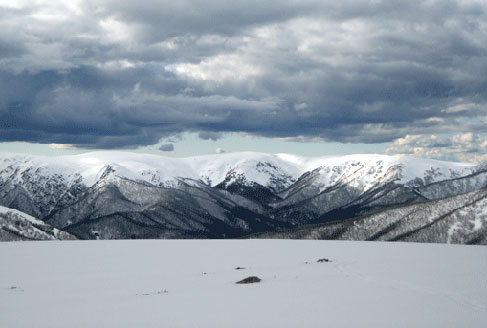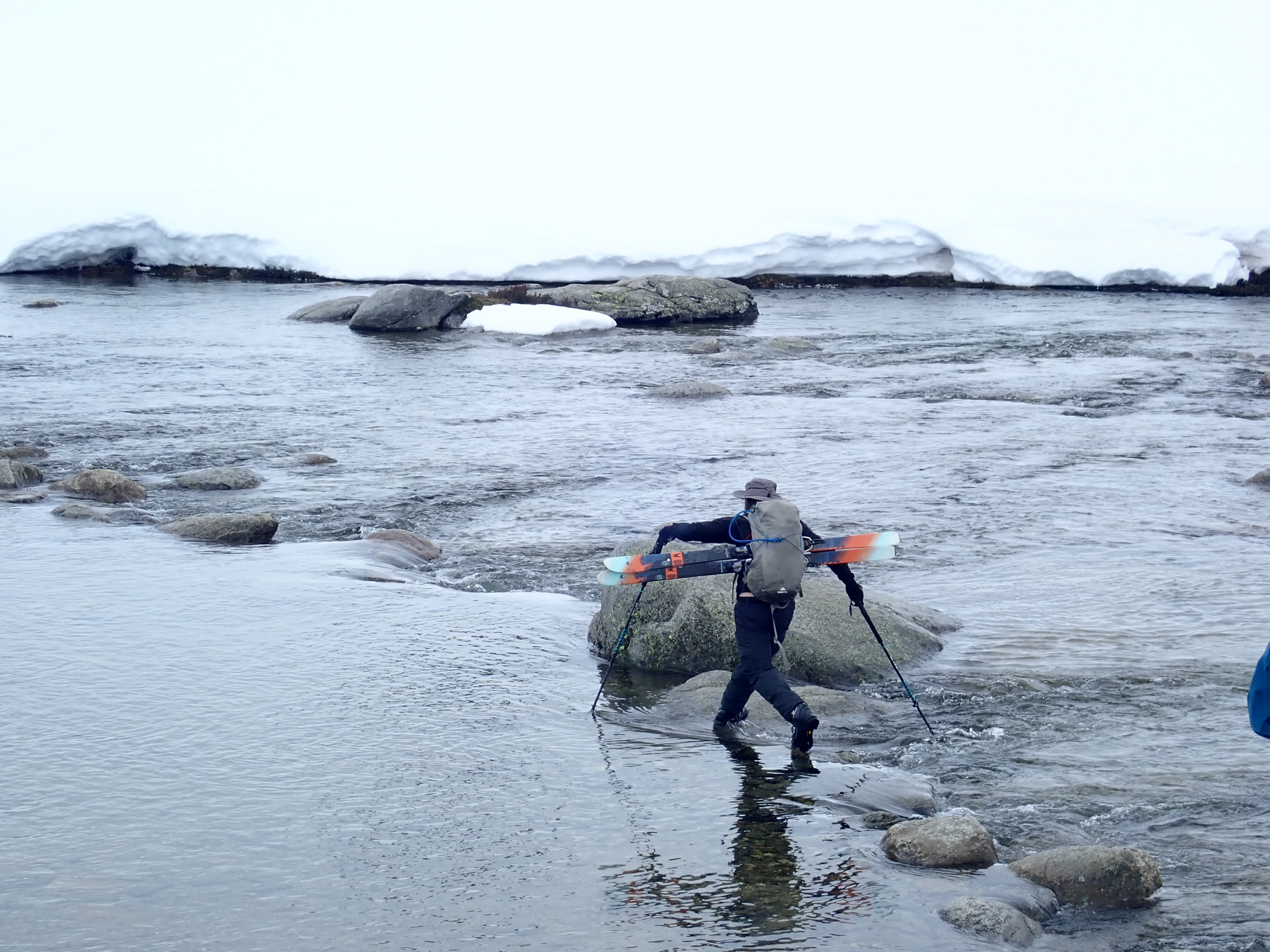Plus a range of other activities ×

Beyond actual skiing activities, our club runs a range of additional social activities including regular winter meetings with speakers on skiing topics, an annual photo contest, conducted at our annual dinner and club awards night. We also organise out of season training events for young and old.
Tips for beginners
Clothing
Opinions about the best clothing for cross country skiing are as varied as skiers themselves. Mountain weather varies quite radically too, so what is appropriate for a snowy mid-Winter day might not be right for a warm day in Spring. Nonetheless there are a few key ideas based on many years of experience of skiing under Australian conditions:
- Layering. The weather can change quite dramatically in the course of a day. Added to this, cross country skiing is a vigorous activity that can raise a sweat. For these reasons, it is important to be able to adjust your clothing as conditions and your activity level change. If you are overdressed, you can work up a sweat, which might then make you uncomfortably cold when the weather cools. The solution to these problems is to wear multiple thin layers, so you can add or remove layers as conditions change. Heavy ski jackets and overalls of the type worn for alpine skiing are generally not suitable in Australian conditions. Multiple layers of thermals, fleece and wind and water proof jacket are the best strategy. As a rough guide, for cold mid-Winter days, most skiers would follow some version of the classic three layers model:
- Start with a thin thermal underwear layer consisting of a long sleeved top and long johns. The merino or polypropylene material used to make thermal underwear is intended to wick the moisture away from your skin, allowing you to stay warmer.
- Next add a layer of sportswear e.g. a fleece, lightweight down jacket, vest or light woollen jumper. Nothing too bulky.
- Wear a wind/water proof jacket as a top layer. More on that soon.
- On a warm Spring day you might find a single layer is most comfortable, especially on the legs (so no thermal long johns). Note also that the layering approach means you always need a day pack to carry any discarded layers. But you already needed that for sunscreen, water, lunch, etc.
- Wind and Rain. Mountain weather is notoriously changeable. Even days when you are certain it won't rain (they happen), the wind can pick up unexpectedly, causing a serious wind chill effect. For these reasons it is always essential to carry a wind/water proof jacket whenever venturing any distance from shelter. Goretex is great, but expensive. Many other modern materials used for waterproof jackets are OK for skiing on patrolled groomed trails. If you plan to do backcountry skiing, it is worth spending the extra dollars on Goretex. The great advantage of Goretex is its breathability. This allows sweat from the inner layers of clothing to evaporate through your jacket, instead of condensing inside and making you cold.
- Head and hands. For the reasons mentioned above, you should always carry a warm beanie. Fleece or wool is fine. Under most conditions, you would want to wear gloves. Again, fleece or wool are fine. For warmer Spring conditions, lighter materials can be more comfortable - light windstopper gloves and a sun hat. Under these conditions, the aim is more about protecting against sunburn than cold, although even on a relatively warm Spring day, some protection from the breeze might be necessary. Most of your skin is covered when you ski, and sunscreen is essential for your face, but most skiers keep their hands and head covered, even on warm days.
- Water repellency. Particularly for outer layers, try to choose materials that repel water and dry quickly. Even if it doesn't rain or snow, as a beginner, you are likely to fall over quite a bit, which can make you wet. Fleece is good. Modern sportswear fabrics are generally good. Wool is OK for those of an old fashioned persuasion. Denim jeans are terrible from this point of view, as are cotton pants. They absorb and hold moisture and are very slow to dry.
- Sunscreen and sunglasses. On a sunny day in the snow, you get a double dose of UV - some bouncing up from the snow as well as the usual direct exposure. Sunscreen for your face and sunglasses (preferable polarising) should always be carried. You never know when you will need them. A long sunny day out on the snow without sunglasses can have consequences - at best a headache and at worst temporary reduction of vision!
All of this may sound expensive, but we find that most skiers are also involved in other outdoor activities and there is some crossover (fleece tops, beanies, rain jackets, etc.). Also keep in mind that skiers tend to acquire items over a long period of time. And keep your eye open for sales at outdoor gear shops. Even the famous Aldi ski sale often has useful items!
Ski hire
At most of the places where we run events, cross country gear hire is available on-mountain. Hiring off-mountain is also possible at various locations along the roads to the resorts and you can even hire gear before you leave Melbourne. The advantage of hiring on-mountain is that if you have any issues with the gear, you can take it back to the hirer and change it quickly. As a beginner, you might find the first pair of boots you try uncomfortable, for example. If they were hired off mountain, you will be stuck with them for the weekend. For this reason, we recommend that beginners hire on-mountain.
Transport
Public transport is available to most resorts. In addition, members often share rides. You can post transport offers and requests on the booking page when you book an event or you can post offers and requests on the club notice board. The club also maintains a schedule of recommended cost sharing amounts for the various destinations to keep cost sharing simple.
Members comments …
A good place for beginners to ask questions. Just post your question here and you will receive some advice from an experienced club member.

